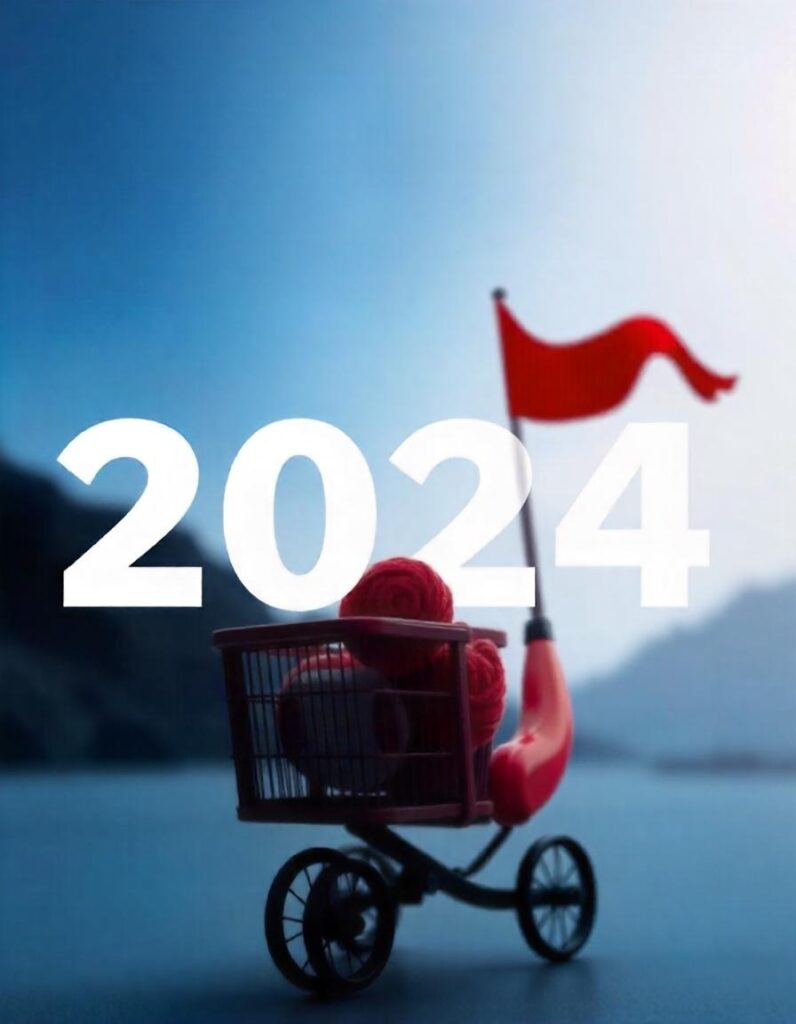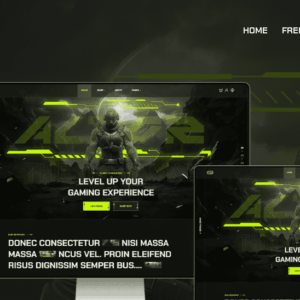
Top Free Prompt to AI Image Generators for E-commerce in 2024
Prompt to AI Image Generators for E-commerce
Introduction
In the realm of digital commerce, where visuals play a pivotal role in capturing attention and driving sales, prompt AI image generators have emerged as indispensable tools. These innovative technologies leverage artificial intelligence to create stunning visuals based on textual descriptions, or “prompts.” By simply providing a detailed description, businesses can generate a wide range of images, from product photos to marketing visuals, without the need for professional graphic designers.

This blog post will delve into the world of prompt AI image generators and explore their transformative impact on e-commerce. We’ll discuss how these tools can streamline product catalogs, enhance marketing campaigns, and ultimately boost online sales. Additionally, we’ll highlight some of the top free prompt AI image generators available in 2024, empowering businesses of all sizes to harness the power of AI-generated imagery.
Table of Contents
AI Image Generators: A New Era of Creativity
AI image generators have emerged as a revolutionary technology, leveraging artificial intelligence and machine learning to create stunning and original images. These tools have significantly impacted the creative landscape, empowering individuals and businesses to generate high-quality visuals without extensive artistic skills or traditional design software.
How AI Image Generators Work
AI image generators utilize complex algorithms to analyze vast datasets of images, learning patterns, styles, and characteristics. By understanding these patterns, the generators can produce new images that are visually appealing and often indistinguishable from human-created artwork.
The process typically involves three key steps:
- Data Input: The generator is fed a massive dataset of images, allowing it to learn from a diverse range of visual styles and content.
- Training: The AI model undergoes a training process, where it learns to identify patterns, features, and relationships within the images. This involves adjusting its parameters to optimize its ability to generate realistic and coherent images.
- Generation: Once trained, the generator can be prompted to create new images based on specific inputs, such as text descriptions, sketches, or existing images. The model uses its learned knowledge to generate images that align with the desired specifications.
Types of AI Image Generators
There are several types of AI image generators available, each with its unique capabilities:
- Generative Adversarial Networks (GANs): GANs consist of two neural networks, a generator and a discriminator, that work together to create and refine images. The generator produces new images, while the discriminator evaluates their authenticity. This iterative process leads to the generation of highly realistic and diverse images.
- Diffusion Models: Diffusion models work by introducing noise into an image and then gradually removing it through a series of steps. This process allows the model to learn the underlying structure of the image data and generate new images with intricate details.
- Style Transfer Models: Style transfer models combine the content of one image with the style of another, creating unique and visually striking results. This technique is often used to transform photos into artistic masterpieces or to apply specific styles to text-based prompts.
The Impact of AI Image Generators
AI image generators have far-reaching implications across various industries:
- Design and Advertising: Designers can quickly create custom visuals for marketing campaigns, product designs, and branding initiatives.
- Art and Entertainment: Artists can explore new creative avenues, experiment with different styles, and generate unique artwork.
- Gaming and Animation: Game developers can create realistic characters, environments, and assets, enhancing the immersive experience for players.
- Education and Research: AI image generators can be used to visualize complex scientific concepts, create educational materials, and assist in research projects.
- Accessibility: AI image generators can be used to create images for people with visual impairments, providing alternative descriptions and representations of visual content.
Ethical Considerations and Challenges
While AI image generators offer significant benefits, there are also ethical considerations and challenges to address:
- Deepfakes: AI can be used to create highly realistic but fake images, known as deepfakes, which can be used to spread misinformation or harm individuals.
- Copyright and Intellectual Property: The use of AI to generate images raises questions about copyright infringement and ownership of generated content.
- Bias: AI models can be biased if they are trained on datasets that contain biases or stereotypes.
- Job Displacement: The increasing capabilities of AI image generators may lead to job displacement in certain creative fields.
The Future of AI Image Generators
As AI image generators continue to evolve, we can expect even more innovative and impressive applications. Future developments may include:
- Improved Realism: AI models will become increasingly capable of generating highly realistic and detailed images.
- Enhanced Creativity: AI will be able to generate more creative and diverse images, pushing the boundaries of artistic expression.
- Personalized Experiences: AI image generators can be tailored to individual preferences and styles, creating personalized visual experiences.
- Integration with Other Technologies: AI image generators may be integrated with other technologies, such as natural language processing and augmented reality, to create new and exciting possibilities.
Real-World Examples
To better understand the potential of AI image generators, here are some real-world examples:
- Midjourney: This popular AI image generator has gained widespread attention for its ability to create stunning and imaginative images based on text prompts. Artists and designers have used Midjourney to generate concept art, album covers, and even entire digital art collections.
- DALL-E 2: Developed by OpenAI, DALL-E 2 is another powerful AI image generator that can create photorealistic images and art from text descriptions. It has been used to generate illustrations for children’s books, create marketing materials, and even design fashion collections.
- Stable Diffusion: Stable Diffusion is an open-source AI model that has gained popularity due to its flexibility and accessibility. It can be used to generate a wide range of images, from realistic portraits to abstract art.
Additional Considerations
- Accessibility: AI image generators can be used to create images for people with visual impairments, providing alternative descriptions and representations of visual content.
- Education: AI image generators can be used to create educational materials, such as diagrams, illustrations, and simulations.
- Research: AI image generators can be used to assist in research projects, such as analyzing medical images or studying climate change.
In conclusion, AI image generators represent a significant advancement in the field of artificial intelligence and have the potential to revolutionize the way we create, imagine, and express ourselves. While there are ethical considerations and challenges to address, the benefits of this technology are undeniable. As AI image generators continue to evolve, we can expect to see even more innovative and exciting applications in the years to come. The Power of Prompts in AI Image Generation
Prompts are the textual descriptions that guide AI image generators in creating visual representations. They serve as a bridge between human language and machine understanding, allowing users to communicate their desired image concepts.
How Prompts Work
When you provide a prompt to an AI image generator, you’re essentially giving it a set of guidelines to follow. The generator then uses its vast dataset of images and its understanding of language to interpret your prompt and generate a corresponding image.
The Role of Prompts
- Instructional guides: Prompts serve as clear instructions for the AI, outlining the specific elements and attributes the generated image should possess.
- Creative catalysts: By providing descriptive details, prompts can spark the AI’s creativity and lead to unexpected and visually appealing results.
Types of Prompts
There are several different types of prompts that can be used with AI image generators:
- Simple prompts: These are concise descriptions that convey the basic idea of the desired image. For example, “A cat playing with a ball of yarn.”
- Descriptive prompts: More detailed prompts provide additional information about the image, such as the style, mood, or specific elements. For instance, “A photorealistic image of a majestic lion roaring in the African savanna.”
- Negative prompts: These prompts specify elements that should not be included in the generated image. This can help refine the results and avoid unwanted features.
The Importance of Prompt Engineering
Creating effective prompts is a skill known as prompt engineering. It involves carefully crafting instructions that accurately convey your desired image. Here are some key factors to consider:
- Specificity: Use precise language to avoid ambiguity.
- Context: Provide relevant details about the scene or subject.
- Style: Indicate the desired artistic style or technique.
- Negative prompts: Specify elements to exclude.
- Experimentation: Try different prompts to explore various possibilities.
Advanced Prompt Techniques
To further enhance your image generation results, consider these advanced techniques:
- Combining multiple prompts: Use a comma or semicolon to separate multiple prompts, allowing the AI to generate images that incorporate elements from each prompt.
- Using specific keywords: Employ keywords like “hyperrealistic,” “impressionist,” or “anime” to guide the AI towards a particular style.
- Leveraging artistic references: Mention specific artists or artworks to inspire the AI’s creative process.
- Incorporating emotions and moods: Describe the desired emotional atmosphere or mood of the image.
The Future of AI Image Generation
AI image generators have come a long way, and their capabilities continue to improve. As technology advances, we can expect even more sophisticated and realistic images to be generated from prompts. This has significant implications for various fields, including art, design, and entertainment.
The Future of Prompts in AI Image Generation As AI image generators become more sophisticated, the role of prompts will likely evolve. We may see the development of more complex prompt languages or even the ability to provide visual examples to guide the AI. Additionally, there’s potential for AI to generate prompts based on user preferences or context, making the image creation process even more streamlined.
Ethical Considerations The rapid advancement of AI image generation also raises ethical concerns. Issues such as deepfakes, copyright infringement, and the potential for misuse of generated images need to be addressed. It’s essential to develop guidelines and regulations to ensure responsible and ethical use of AI image generation technology.
Prompts and Creativity While AI image generators can produce impressive results, they cannot fully replicate the creativity and intuition of human artists. Prompts serve as a bridge between human imagination and machine capabilities, allowing for a unique collaboration. By carefully crafting prompts, we can guide the AI towards generating images that are both visually stunning and emotionally resonant.

Prompts are a powerful tool in the world of AI image generation. By understanding how to effectively use them, we can unlock the full potential of these technologies and create truly remarkable visual content. As AI continues to evolve, the possibilities for creative expression are endless.
Additional Considerations
- Prompt Length: While longer prompts can provide more detail, shorter prompts can sometimes be more effective. Experiment to find what works best for your desired outcome.
- Contextual Understanding: AI image generators are becoming increasingly adept at understanding context. Consider providing additional information about the setting, time period, or cultural context to help the AI generate more accurate and relevant images.
- Iterative Process: Image generation is often an iterative process. Be prepared to refine your prompts and experiment with different options to achieve your desired results.
- Bias and Fairness: AI image generators can be biased based on the data they are trained on. It’s important to be aware of potential biases and to work towards creating more equitable and inclusive AI systems.
- Accessibility: Ensure that your prompts are accessible to a wide range of users, including those with disabilities. Consider using simple language and avoiding jargon.
By carefully considering these factors, you can maximize the potential of AI image generation and create truly exceptional visual content.
Additional Tips for Effective Prompt Engineering:
- Use vivid language: Instead of saying “a cat,” try “a fluffy tabby cat.”
- Be specific about details: Instead of saying “a tree,” try “a tall oak tree with leaves rustling in the wind.”
- Experiment with different styles: Try different artistic styles, such as impressionism, cubism, or surrealism.
- Use negative prompts to refine your results: If you don’t want a certain element in your image, specify it in a negative prompt.
- Iterate and refine: Don’t be afraid to experiment and make adjustments to your prompts. The more you practice, the better you’ll become at creating effective prompts.
By following these tips, you can enhance your image generation experience and create even more stunning visuals.
Beyond the Basics: Advanced Prompt Engineering Techniques
In addition to the techniques mentioned above, here are some more advanced prompt engineering strategies:
- Leverage the power of artificial intelligence: Some AI image generators allow you to use AI-generated prompts. These prompts can provide inspiration or help you refine your own ideas.
- Experiment with different AI models: Different AI image generators have different strengths and weaknesses. Experiment with different models to find the one that best suits your needs.
- Consider the limitations of AI: While AI image generators are powerful tools, they are not perfect. Be aware of their limitations and adjust your expectations accordingly.
- Stay up-to-date with the latest trends: The field of AI image generation is constantly evolving. Stay informed about the latest developments and techniques to ensure you’re getting the most out of your AI tools.
By mastering these advanced techniques, you can take your image generation skills to the next level and create even more impressive visuals.
Beyond the Technical: The Human Element
While prompts are essential for guiding AI image generators, the human element is also crucial. The ability to conceptualize, imagine, and express ideas is a uniquely human trait. By combining the power of AI with human creativity, we can create truly extraordinary visual content.
The Future of AI Image Generation
As AI continues to advance, we can expect even more remarkable breakthroughs in image generation. We may see AI models that can understand and respond to natural language prompts with unprecedented accuracy and creativity. Additionally, there’s potential for AI to generate entire visual narratives, from storyboards to finished animations.
The future of AI image generation is exciting, and the possibilities are endless. By understanding the power of prompts and embracing the creative potential of AI, we can unlock a new era of visual storytelling and expression.
Additional Considerations:
- Prompt Length: While longer prompts can provide more detail, shorter prompts can sometimes be more effective. Experiment to find what works best for your desired outcome.
- Contextual Understanding: AI image generators are becoming increasingly adept at understanding context. Consider providing additional information about the setting, time period, or cultural context to help the AI generate more accurate and relevant images.
- Iterative Process: Image generation is often an iterative process. Be prepared to refine your prompts and experiment with different options to achieve your desired results.
- Bias and Fairness: AI image generators can be biased based on the data they are trained on. It’s important to be aware of potential biases and to work towards creating more equitable and inclusive AI systems.
- Accessibility: Ensure that your prompts are accessible to a wide range of users, including those with disabilities. Consider using simple language and avoiding jargon.
By carefully considering these factors, you can maximize the potential of AI image generation and create truly exceptional visual content.
Additional Tips for Effective Prompt Engineering:
- Use vivid language: Instead of saying “a cat,” try “a fluffy tabby cat.”
- Be specific about details: Instead of saying “a tree,” try “a tall oak tree with leaves rustling in the wind.”
- Experiment with different styles: Try different artistic styles, such as impressionism, cubism, or surrealism.
- Use negative prompts to refine your results: If you don’t want a certain element in your image, specify it in a negative prompt.
- Iterate and refine: Don’t be afraid to experiment and make adjustments to your prompts. The more you practice, the better you’ll become at creating effective prompts.
By following these tips, you can enhance your image generation experience and create even more stunning visuals.
Beyond the Basics: Advanced Prompt Engineering Techniques In addition to the techniques mentioned above, here are some more advanced prompt engineering strategies:
- Leverage the power of artificial intelligence: Some AI image generators allow you to use AI-generated prompts. These prompts can provide inspiration or help you refine your own ideas.
- Experiment with different AI models: Different AI image generators have different strengths and weaknesses. Experiment with different models to find the one that best suits your needs.
- Consider the limitations of AI: While AI image generators are powerful tools, they are not perfect. Be aware of their limitations and adjust your expectations accordingly.
- Stay up-to-date with the latest trends: The field of AI image generation is constantly evolving. Stay informed about the latest developments and techniques to ensure you’re getting the most out of your AI tools.
By mastering these advanced techniques, you can take your image generation skills to the next level and create even more impressive visuals.
Beyond the Technical: The Human Element
While prompts are essential for guiding AI image generators, the human element is also crucial. The ability to conceptualize, imagine, and express ideas is a uniquely human trait. By combining the power of AI with human creativity, we can create truly extraordinary visual content.
The Future of AI Image Generation
As AI continues to advance, we can expect even more remarkable breakthroughs in image generation. We may see AI models that can understand and respond to natural language prompts with unprecedented accuracy and creativity. Additionally, there’s potential for AI to generate entire visual narratives, from storyboards to finished animations.
The future of AI image generation is exciting, and the possibilities are endless. By understanding the power of prompts and embracing the creative potential of AI, we can unlock a new era of visual storytelling and expression.
AI Image Generators: A Revolution in E-commerce
Artificial Intelligence (AI) has rapidly infiltrated various industries, and e-commerce is no exception. One of its most transformative applications lies in image generation. AI-powered image generators have emerged as a game-changer for businesses, offering a multitude of benefits that can enhance product presentation, improve customer experience, and drive sales.
One of the most significant advantages of AI image generators is their ability to create high-quality product images at scale. Traditionally, product photography involved hiring professional photographers, setting up studio setups, and editing images manually. These processes could be time-consuming and expensive. AI, on the other hand, can generate a vast array of images in a matter of minutes, allowing businesses to quickly update their product catalogs and ensure consistent visual quality across their entire product line.
Furthermore, AI image generators can be used to create product images in various styles and formats. For example, businesses can generate images with different backgrounds, lighting conditions, and angles to showcase their products from various perspectives. This can help customers visualize the products better and make informed purchasing decisions. Additionally, AI can generate images in different formats, such as 3D models or augmented reality (AR) experiences, providing customers with immersive and interactive product presentations.
Another key benefit of AI image generators is their ability to personalize product recommendations. By analyzing customer data, such as purchase history, browsing behavior, and demographics, AI can generate customized product images that are more likely to resonate with individual shoppers. This personalized approach can improve customer satisfaction and increase conversion rates. For instance, an AI-powered image generator could create product images that feature the customer’s preferred color or style, making the products more appealing to them.
Moreover, AI image generators can help businesses to optimize their marketing campaigns. By creating visually appealing product images, businesses can create more engaging social media posts, email marketing campaigns, and advertisements. This can help to increase brand awareness, drive traffic to the website, and ultimately boost sales. Additionally, AI can be used to generate personalized marketing materials, such as product recommendations or personalized offers, based on customer preferences.
While AI image generators offer numerous benefits, it is essential to note that they are not a complete replacement for traditional photography. In some cases, high-quality, professionally shot images may still be necessary to showcase products in the best possible light. However, AI can be a valuable tool for generating a large volume of product images and for creating unique and engaging visual content.
One of the challenges associated with AI image generators is the potential for bias in the generated images. AI models are trained on large datasets of images, and if these datasets contain biases, the generated images may also reflect those biases. For example, if the training data primarily consists of images of white people, the AI may struggle to generate images of people of color accurately. To address this issue, it is important to ensure that the training data is diverse and representative of the population.
Another challenge is the potential for AI-generated images to be used for malicious purposes, such as creating deepfakes. Deepfakes are manipulated videos or images that can be used to spread misinformation or harm individuals. While AI can be used to create deepfakes, it can also be used to detect and prevent them. By developing AI models that can identify deepfakes, businesses and organizations can protect themselves from being victims of such attacks.
AI image generators have the potential to revolutionize the way e-commerce businesses present their products. By creating high-quality images, personalizing product recommendations, and enhancing marketing campaigns, AI can help businesses to improve customer experience, increase sales, and stay competitive in the digital age. However, it is important to address the challenges associated with AI image generation, such as bias and the potential for misuse, to ensure that this technology is used responsibly and ethically.
Additional Considerations:
- Cost-effectiveness: AI image generators can be more cost-effective than traditional photography methods, as they eliminate the need for studio setups, photographers, and editing software.
- Accessibility: AI image generators can make high-quality product images accessible to businesses of all sizes, regardless of their budget or resources.
- Scalability: AI can generate images at scale, allowing businesses to quickly update their product catalogs and respond to market changes.
- Innovation: AI image generators can be used to create innovative and engaging product presentations, such as 3D models, AR experiences, and personalized product recommendations.
- Ethical considerations: It is important to use AI image generators ethically and responsibly, ensuring that the generated images are accurate, unbiased, and do not contribute to harmful or discriminatory practices.
- Integration with other AI tools: AI image generators can be integrated with other AI tools, such as chatbots and recommendation engines, to create a more personalized and engaging customer experience.
- Continuous improvement: AI technology is constantly evolving, and businesses should stay updated on the latest advancements in AI image generation to ensure they are using the most effective tools.
- Data privacy: Businesses should ensure that the data used to train AI image generators is handled in accordance with data privacy regulations to protect customer information.
- Intellectual property: Businesses should be aware of intellectual property rights related to AI-generated images, including copyright and trademark laws.
- Environmental impact: The energy consumption associated with training and running AI models can have environmental implications. Businesses should consider using energy-efficient hardware and software to minimize their carbon footprint.
- Accessibility: AI image generators should be designed to be accessible to people with disabilities, ensuring that all customers can benefit from their capabilities.
- Customization: AI image generators can be customized to meet the specific needs of individual businesses, allowing them to create images that align with their brand identity and target audience.
- Integration with product information management (PIM) systems: AI image generators can be integrated with PIM systems to streamline the process of creating and managing product catalogs.
- Real-time image generation: Some AI image generators can generate images in real-time, allowing businesses to create custom images on demand.
- Integration with social media platforms: AI image generators can be used to create high-quality images for social media marketing, helping businesses to increase their online visibility and reach.
- Customer feedback and testing: Businesses should gather feedback from customers to ensure that AI-generated images are effective and meet their needs. They should also test different image styles and formats to determine which ones resonate best with their target audience.
- Integration with virtual and augmented reality: AI image generators can be used to create immersive and interactive product experiences in virtual and augmented reality environments.
- Ethical considerations for AI-generated content: Businesses should be mindful of the ethical implications of using AI-generated content, such as the potential for deepfakes and misinformation.
- Future trends in AI image generation: Businesses should stay informed about the latest advancements in AI image generation, such as the development of more realistic and detailed models, and the integration of AI with other technologies like natural language processing and computer vision.
By carefully considering these factors, businesses can leverage AI image generators to enhance their e-commerce operations and achieve their goals.
Case Studies:
- Amazon: Amazon has been a pioneer in using AI image generation to enhance its e-commerce platform. The company uses AI to generate product images, create personalized product recommendations, and optimize its marketing campaigns.
- Zara: The fashion retailer Zara uses AI image generation to create new product designs and variations. By generating images of different styles and colors, Zara can quickly test the market for new products and make informed decisions about which items to produce.
- Wayfair: Wayfair, an online furniture retailer, uses AI image generation to create 3D models of its products. This allows customers to visualize the furniture in their homes before making a purchase.
- Sephora: Sephora, a beauty retailer, uses AI image generation to create personalized makeup tutorials and product recommendations based on customers’ skin tone and facial features.
- Walmart: Walmart has been experimenting with AI image generation to create virtual product displays and interactive shopping experiences.
These case studies demonstrate the potential of AI image generators to transform the e-commerce industry. By embracing this technology, businesses can improve their product presentation, enhance customer experience, and drive sales.
Additional Considerations:
- Integration with customer relationship management (CRM) systems: AI image generators can be integrated with CRM systems to provide a more personalized and targeted customer experience.
- Accessibility for people with visual impairments: AI image generators can be used to create alternative text descriptions for images, making them accessible to people with visual impairments.
- Integration with search engine optimization (SEO): AI image generators can be used to create images that are optimized for search engines, helping businesses to improve their online visibility.
- Integration with social media advertising: AI image generators can be used to create visually appealing and engaging ads for social media platforms.
- Integration with virtual try-on technology: AI image generators can be used to create virtual try-on experiences for clothing and accessories.
- Integration with product configurators: AI image generators can be used to create customized product images based on customer preferences.
- Integration with generative design tools: AI image generators can be used to create new product designs and variations.
- Integration with chatbots: AI image generators can be used to create visually appealing and informative responses for chatbots.
- Integration with virtual assistants: AI image generators can be used to create visual aids for virtual assistants, such as product images or step-by-step instructions.
- Integration with voice assistants: AI image generators can be used to create visual representations of spoken commands or information for voice assistants.
By carefully considering these factors, businesses can leverage AI image generators to enhance their e-commerce operations and achieve their goals.

Top Free Prompt AI Image Generators for E-commerce
Artificial Intelligence (AI) has rapidly infiltrated various industries, and e-commerce is no exception. One of its most transformative applications lies in image generation. Prompt AI image generators have emerged as a valuable tool for businesses, offering a way to create high-quality product images without breaking the bank.
Midjourney, DALL-E 2, and Stable Diffusion are among the most popular free prompt AI image generators available. These tools allow users to generate images based on text prompts, offering a wide range of styles and genres. This can be particularly useful for businesses that struggle to find suitable stock images or don’t have the resources for professional photography.
Midjourney is a powerful tool that can generate images in various artistic styles, from realistic to abstract. It offers a user-friendly interface and is easy to learn. DALL-E 2 is another popular option that can create highly detailed and realistic images. It is particularly effective at generating images of people and objects. Stable Diffusion is an open-source tool that offers a high degree of customization. It can be used to generate images in a wide range of styles and is particularly effective at creating artistic and imaginative images.
By utilizing these free prompt AI image generators, e-commerce businesses can create visually appealing product images that can help to increase conversions and drive sales. These tools can be used to create product images for websites, social media, and marketing materials.
Here are some of the benefits of using free prompt AI image generators for e-commerce:
- Cost-effective: These tools are free to use, making them accessible to businesses of all sizes.
- Time-saving: AI image generators can generate images quickly and efficiently, saving businesses time and resources.
- Customization: These tools offer a high degree of customization, allowing businesses to create images that align with their brand identity.
- Quality: AI image generators can produce high-quality images that can help to improve the overall look and feel of an e-commerce website.
- Innovation: These tools can be used to create innovative and engaging visual content that can help businesses to stand out from the competition.
- Accessibility: Free prompt AI image generators are accessible to anyone with an internet connection, making them a valuable resource for businesses of all sizes.
- Versatility: These tools can be used to create a wide variety of images, from product photos to marketing materials.
- Integration with other tools: Prompt AI image generators can be integrated with other tools, such as design software and social media platforms, to streamline the image creation process.
- Community support: Many free prompt AI image generators have active communities where users can share tips, tricks, and inspiration.
- Continuous improvement: AI image generators are constantly being updated and improved, ensuring that businesses can always access the latest features and capabilities.
- Experimentation: Free prompt AI image generators allow businesses to experiment with different styles and techniques to find the best approach for their products and brand.
- Scalability: These tools can scale to meet the needs of businesses of all sizes, from small startups to large corporations.
- Accessibility for people with disabilities: Many free prompt AI image generators are designed to be accessible to people with disabilities, ensuring that everyone can benefit from their capabilities.
- Integration with other AI tools: Prompt AI image generators can be integrated with other AI tools, such as chatbots and recommendation engines, to create a more personalized and engaging customer experience.
- Integration with product information management (PIM) systems: Prompt AI image generators can be integrated with PIM systems to streamline the process of creating and managing product catalogs.
- Real-time image generation: Some free prompt AI image generators can generate images in real-time, allowing businesses to create custom images on demand.
- Integration with social media platforms: Prompt AI image generators can be used to create high-quality images for social media marketing, helping businesses to increase their online visibility and reach.
- Customer feedback and testing: Businesses should gather feedback from customers to ensure that AI-generated images are effective and meet their needs. They should also test different image styles and formats to determine which ones resonate best with their target audience.
- Integration with virtual and augmented reality: Prompt AI image generators can be used to create immersive and interactive product experiences in virtual and augmented reality environments.
- Ethical considerations for AI-generated content: Businesses should be mindful of the ethical implications of using AI-generated content, such as the potential for deepfakes and misinformation.
- Future trends in AI image generation: Businesses should stay informed about the latest advancements in AI image generation, such as the development of more realistic and detailed models, and the integration of AI with other technologies like natural language processing and computer vision.
By carefully considering these factors, businesses can leverage free prompt AI image generators to enhance their e-commerce operations and achieve their goals.
Case Studies:
- Amazon: Amazon has been a pioneer in using AI image generation to enhance its e-commerce platform. The company uses AI to generate product images, create personalized product recommendations, and optimize its marketing campaigns.
- Zara: The fashion retailer Zara uses AI image generation to create new product designs and variations. By generating images of different styles and colors, Zara can quickly test the market for new products and make informed decisions about which items to produce.
- Wayfair: Wayfair, an online furniture retailer, uses AI image generation to create 3D models of its products. This allows customers to visualize the furniture in their homes before making a purchase.
- Sephora: Sephora, a beauty retailer, uses AI image generation to create personalized makeup tutorials and product recommendations based on customers’ skin tone and facial features.
- Walmart: Walmart has been experimenting with AI image generation to create virtual product displays and interactive shopping experiences.
These case studies demonstrate the potential of free prompt AI image generators to transform the e-commerce industry. By embracing this technology, businesses can improve their product presentation, enhance customer experience, and drive sales.
Additional Considerations:
- Intellectual property: Businesses should be aware of intellectual property rights related to AI-generated images, including copyright and trademark laws.
- Data privacy: Businesses should ensure that the data used to train AI image generators is handled in accordance with data privacy regulations to protect customer information.
- Accessibility: AI image generators should be designed to be accessible to people with disabilities, ensuring that all customers can benefit from their capabilities.
- Sustainability: Businesses should consider the environmental impact of using AI image generators and strive to minimize their carbon footprint.
- Integration with other e-commerce technologies: AI image generators can be integrated with other e-commerce technologies, such as chatbots, recommendation engines, and personalization platforms, to create a more comprehensive and effective customer experience.
- Customization: AI image generators can be customized to meet the specific needs of individual businesses, allowing them to create images that align with their brand identity and target audience.
- Continuous learning: AI technology is constantly evolving, and businesses should stay updated on the latest advancements in AI image generation to ensure they are using the most effective tools.
By carefully considering these factors, businesses can leverage free prompt AI image generators to enhance their e-commerce operations and achieve their goals.
Choosing the Right Prompt AI Image Generator for Your E-commerce Business
Prompt AI image generators have become an invaluable tool for e-commerce businesses seeking to create high-quality product images. However, with so many options available, it can be challenging to determine which prompt AI image generator is the best fit for your specific needs. This guide will provide you with tips on how to choose the right tool for your e-commerce business.
Consider Your Business Needs
Before selecting a prompt AI image generator, it’s essential to assess your e-commerce business’s specific needs. Consider the following factors:
- Image style: Do you require realistic images, artistic renderings, or something else?
- Customization options: How much control do you need over the generated images?
- Integration with existing tools: Does the prompt AI image generator integrate with your current design software or e-commerce platform?
- Scalability: Can the tool handle the volume of images your business needs to generate?
Set a Budget
Prompt AI image generators vary in price, so it’s important to set a budget before you start your search. While free options are available, paid tools often offer more advanced features and customization options. Determine how much you’re willing to invest in a prompt AI image generator to meet your e-commerce business’s needs.
Evaluate Features
Once you have a clear understanding of your business needs and budget, you can start evaluating the features of different prompt AI image generators. Look for tools that offer:
- High-quality image generation: The generator should be capable of producing high-resolution, visually appealing images.
- Customization options: Look for tools that allow you to customize the generated images to match your brand’s style and aesthetic.
- Ease of use: The generator should be user-friendly and easy to learn, even if you don’t have technical expertise.
- Integration capabilities: Consider whether the generator integrates with your existing software and tools.
- Community support: A strong community can provide valuable resources and support.
Test the Generator
Before making a final decision, it’s recommended to test a few prompt AI image generators to see which one best suits your needs. Experiment with different prompts and settings to gauge the quality of the generated images and the ease of use of the tool.
Additional Tips
- Consider your target audience: The images you generate should appeal to your target audience. Think about their preferences and tastes when choosing a prompt AI image generator.
- Read reviews and testimonials: Look for reviews and testimonials from other users to get a sense of the generator’s performance and reliability.
- Try a free trial: Many prompt AI image generators offer free trials, so you can test the tool before committing to a paid subscription.
- Experiment with different prompts: Don’t be afraid to experiment with different prompts to see what kind of images you can generate.
By following these tips, you can choose the right prompt AI image generator to enhance your e-commerce business’s visual content and improve your overall customer experience.
Mastering the Art of Prompts: Unleashing the Power of Themesyde for Your AI Image Generation Needs
AI image generators have revolutionized the way we create visuals. Gone are the days of expensive stock photos or relying solely on photography skills. Now, with the magic of AI, anyone can generate high-quality images based on their imagination. However, the key to unlocking this potential lies in crafting effective prompts.
Think of a prompt as a detailed instruction for the AI. The clearer and more specific you are, the better the image will align with your vision. Here’s where Themesyde.com comes in, offering a valuable resource to elevate your AI image generation experience.
Themesyde: Your One-Stop Shop for Powerful Prompts
Themesyde.com is a unique platform dedicated to providing high-quality prompts for various AI image generators. It caters to a broad range of needs, from individual creators to businesses seeking stunning visuals for their projects.
Why Buy Prompts from Themesyde?
- Save Time and Effort: Crafting effective prompts can be time-consuming. Themesyde offers a vast library of pre-made prompts, categorized by themes, styles, and subjects. This allows you to quickly find the perfect prompt for your needs without having to start from scratch.
- Enhanced Creativity: Stuck for ideas? Themesyde can help spark your creativity with unique and inspiring prompts that go beyond the basic. Explore a range of styles, from photorealistic to artistic, and let your imagination run wild.
- Improved Results: Themesyde’s prompts are meticulously crafted by experts who understand the nuances of different AI image generators. By using their prompts, you can significantly increase your chances of generating stunning and high-quality images.
- Boost Your Efficiency: Themesyde helps you streamline your workflow. With pre-made prompts, you can spend less time writing instructions and more time creating. This is especially beneficial for businesses with high image production demands.
- Community and Support: Themesyde provides access to a vibrant community of creators and AI enthusiasts. You can share tips, discuss techniques, and learn from others. Additionally, the platform might offer support resources to help you get the most out of the prompts.
How to Buy Prompts on Themesyde
The exact process of purchasing prompts on Themesyde may vary depending on the platform’s specific layout. However, here’s a general outline to give you an idea:
- Browse the Library: Themesyde likely offers a categorized library of prompts. You can explore themes like “nature,” “fantasy,” “products,” “portraits,” and more. Additionally, they might offer filters based on image style (realistic, cartoon, etc.)
- Select a Prompt: Once you find a theme or subject that aligns with your needs, browse through individual prompts within that category. Each prompt might include a description and potentially even a sample image generated with that specific prompt.
- Purchase Options: Themesyde may offer different purchasing options, such as purchasing individual prompts or subscribing for a monthly fee that gives you access to a wider library. Choose the option that best suits your needs and budget.
- Download or Use: Once you’ve purchased a prompt, you can typically download it for use with your preferred AI image generator. Alternatively, Themesyde might offer direct integration with certain AI tools, allowing you to use the prompt within the platform itself.
Beyond Purchased Prompts: Additional Resources on Themesyde
While buying prompts offers a quick and convenient way to enhance your AI image generation experience, Themesyde might offer additional resources to help you master the art of crafting effective prompts:
- Prompt-writing Tutorials: These tutorials might guide you through the process of writing clear, specific, and engaging prompts that get the AI to generate the visuals you desire.
- AI Image Generator Specific Guides: Different AI image generators have their own strengths and weaknesses. Themesyde might offer guides specific to various AI tools, providing tips on tailoring prompts for optimal results with each platform.
- Community Forums: As mentioned earlier, a vibrant community is a valuable asset. Themesyde’s forums allow you to connect with other creators, share successes and challenges, and learn from their experiences with different prompts and AI tools.
Empower Your Creativity with Themesyde
AI image generation holds immense potential for creators across various fields. However, mastering this technology requires understanding the importance of crafting effective prompts. Themesyde.com emerges as a valuable resource in this journey. With a library of pre-made prompts, community support, and potentially additional learning resources, Themesyde can empower you to unleash the full creative potential of AI image generation. So, explore the platform, find the perfect prompt, and let your imagination take flight!
A Deep Dive into AI Image Generators: Essential Resources
AI image generators have revolutionized the way we create visuals. If you’re eager to learn more about these powerful tools, there’s a wealth of resources available online.
YouTube: One of the most accessible and comprehensive resources is YouTube. Numerous creators offer detailed tutorials, tips, and tricks for using popular AI image generators like Midjourney, DALL-E 2, and Stable Diffusion. These tutorials often cover everything from basic usage to advanced techniques, making them suitable for beginners and experienced users alike.
Online Forums and Communities: Joining online communities dedicated to AI image generation can be incredibly beneficial. Platforms like Reddit, Discord, and specialized forums provide spaces where users can share experiences, ask questions, and learn from each other. These communities are often filled with passionate enthusiasts who are eager to help newcomers and share their latest discoveries.
Blog Posts and Articles: Countless blogs and websites publish articles and tutorials on AI image generators. These resources can provide valuable insights into the latest trends, techniques, and best practices. Whether you’re interested in learning about specific tools or exploring creative applications, you’re likely to find relevant information.
Online Courses: For a structured learning experience, consider enrolling in online courses. Platforms like Coursera and Udemy offer courses on AI image generation that cover various topics, from the basics to advanced techniques. These courses can provide a comprehensive understanding of the technology and its applications.
Books: If you prefer a more traditional learning approach, books can offer valuable insights into AI image generation. Titles like “Generative AI: The Creative Revolution” and “The Art of AI: A Guide to Creating Beautiful and Meaningful Images with Artificial Intelligence” provide in-depth explanations and practical advice.
Additional Resources:
- Official Documentation: Many AI image generators have their own official documentation, which can be a valuable resource for learning about specific features and capabilities.
- Online Tutorials: Websites like Medium and Towards Data Science often publish tutorials on AI image generation.
- Social Media: Follow influencers and experts in the field on social media to stay updated on the latest trends and developments.
- AI Image Generator Communities: There are dedicated communities and forums specifically for AI image generators. These platforms can be a great place to connect with other users, share tips, and get inspiration.
- AI Conferences and Workshops: Attending conferences and workshops related to AI and machine learning can provide valuable insights and networking opportunities.
- AI Research Papers: Exploring research papers on AI image generation can give you a deeper understanding of the underlying technology and its potential applications.
By exploring these resources, you can gain a comprehensive understanding of AI image generators and learn how to use them effectively to create stunning visuals. Remember, the key to mastering these tools is practice and experimentation.
Hey there,
Are you a fresh graduate looking for a challenging and rewarding career? Themesyde is offering exciting opportunities for new talent to join our team!
We’re seeking motivated individuals who are passionate about [your company’s field] and eager to grow their skills. No experience required!
What we offer:
- Free training: We’ll provide you with the necessary skills and knowledge to succeed.
- Flexible work arrangements: Enjoy the freedom to work on your own terms.
- Competitive compensation: Your earnings will be based on your performance and dedication.
If you’re interested in learning more, please visit our website at [Themesyde website link] or send your resume to [email address].
Let’s build a brighter future together!
Best regards,
Mubina Ahmad
CEO
Themesyde
Conclusion
AI image generators are a powerful tool that can be used to create stunning visuals. By understanding how they work and how to write effective prompts, you can use these tools to enhance your e-commerce business and create engaging content.
Visit our Themesyde.com learn more about prompt AI image generators and to purchase our high-quality prompts. Our prompts are designed to help you create stunning visuals that will capture the attention of your audience.
Frequesntly Asked Questions ( FAQs )
What are AI image generators?
AI image generators are computer programs that can create images based on text prompts. These tools use artificial intelligence to analyze the prompt and generate an image that matches the description.
How do AI image generators work?
AI image generators use a process called deep learning to generate images. They are trained on massive datasets of images and text, which allows them to learn how to create images that are consistent with the input prompt.
What can I use AI image generators for?
AI image generators have a wide range of applications. They can be used to create product images, marketing materials, and even art. They can also be used to generate images that are difficult or impossible to capture with a traditional camera.
Are AI image generators expensive?
There are both free and paid AI image generators available. Some of the most popular free options include Midjourney, DALL-E 2, and Stable Diffusion. Paid options often offer more advanced features and customization options.
How do I write effective prompts for AI image generators?
Writing effective prompts is essential for getting the best results from AI image generators. Be as specific and detailed as possible in your prompts, and use vivid language to describe the image you want to create.
What are the limitations of AI image generators?
AI image generators are still under development, and they have some limitations. For example, they may struggle to generate images that are highly realistic or that contain complex details.
I need Services with …
- Wordpress Service
- Shopify Service
- Youtube Service
- Cv and resume Service
- Linkedin Service
Latest Post
-
Top Daily Taste WordPress Theme: Best Choice for Your Site
$ 15Original price was: $ 15.$ 13Current price is: $ 13. Add to cartAdd to WishlistAdd to Wishlist -

Get Hostinger’s Low-Cost Hosting Now!
Don’t miss out on affordable hosting with Hostinger – click now to bring your website online at an unbeatable price!










